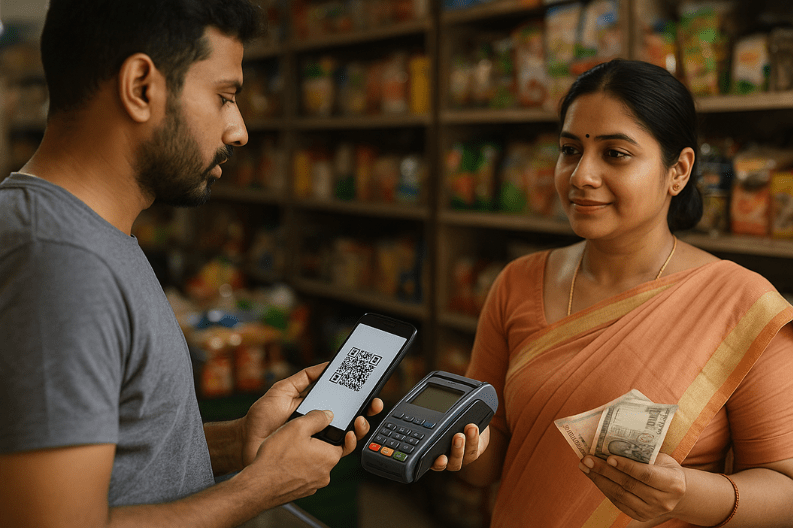Digital payments contribute 99.8 pc of India retail transactions, marking a massive transformation in how people pay for goods and services. As of the first quarter of the financial year 2026 (Q1 FY26), digital payments dominated India’s retail payment system, thanks to strong government policies, improved infrastructure, and rapid technological growth.
A recent report by CareEdge Analytics shows that digital payments are now the top choice for consumers. Leading the way is the Unified Payments Interface (UPI), followed by Aadhaar-enabled payment system (AePS) and Immediate Payment Service (IMPS). Together, they accounted for 92.6% of the total payment value and 99.8% of transaction volume in Q1 FY26.
The rapid expansion of internet access has fueled this shift. Internet usage rose from 60.7% in March 2021 to 70.9% by June 2025, allowing millions more to participate in the digital economy. With more people owning smartphones, even those without traditional bank accounts are now using digital payments. According to Tanvi Shah, a senior director at CareEdge, this inclusivity is driving economic participation at an unprecedented scale.
UPI continues to be the main driver of digital growth. During Q1 FY26, India recorded an astonishing 54.9 billion UPI transactions, while the total for FY25 reached 185.9 billion. Between FY23 and FY25, UPI transactions grew by 49% annually. And it is showing how quickly digital payment methods are spreading beyond major cities and into smaller towns.
As more consumers and businesses switch to digital platforms, spending behavior has also changed. Digital transactions accounted for 30% of private final consumption expenditure (PFCE) in FY23, but by Q1 FY26, this share had surged to 50%. This demonstrates a clear shift in consumer preference toward cashless payments.
However, cash still plays a major role. Despite the digital boom, cash payments continue to hold a 50% share in PFCE, showing that many Indians still prefer using cash for daily purchases. Experts believe that India’s payment system is evolving into a hybrid model, where both digital and cash payments coexist and serve different consumer needs.
Several key factors explain this digital revolution:
- Policy Support: Government initiatives and regulatory frameworks have encouraged digital adoption.
- Infrastructure: Better internet connectivity and mobile networks have improved transaction reliability.
- Fintech Innovation: New financial technologies have made digital payments easier and more secure.
- Accessibility: UPI and AePS have simplified transactions for millions, including rural populations.
These changes go beyond just payments; they are reshaping the entire economic landscape. Digital platforms are enabling businesses to reach more customers, making transactions faster and safer, and reducing the informal cash economy. As a result, financial inclusion is improving, and more people are participating in formal economic activities.
Experts believe that UPI will remain at the heart of India’s payment ecosystem. Future innovations, such as cross-border payment solutions and offline payment options, are likely to expand its reach even further. The government is also planning to integrate digital payment platforms into more public services, enhancing convenience for citizens.
In conclusion, Digital payments contribute 99.8 pc of India retail transactions and continue to revolutionize the way money moves in the economy. With rapid growth in technology, strong policy support, and rising internet use, India’s journey toward a cash-light economy is well underway. This digital shift will not only boost financial inclusion but also drive sustained economic growth in the years to come.



